Cookie recipes are trendy like clothing. Case in point, the 1980s were owned by shoulder pads and also by congo bars. And the 2010s were the decade of athleisure and macarons. There are foundation cookies that will always be in style, like oatmeal, chocolate chip, peanut butter and brownies. It’s always interesting reading the vintage recipe booklets designed to be sold at grocery store checkouts to see what the trends of the day were when they were written.
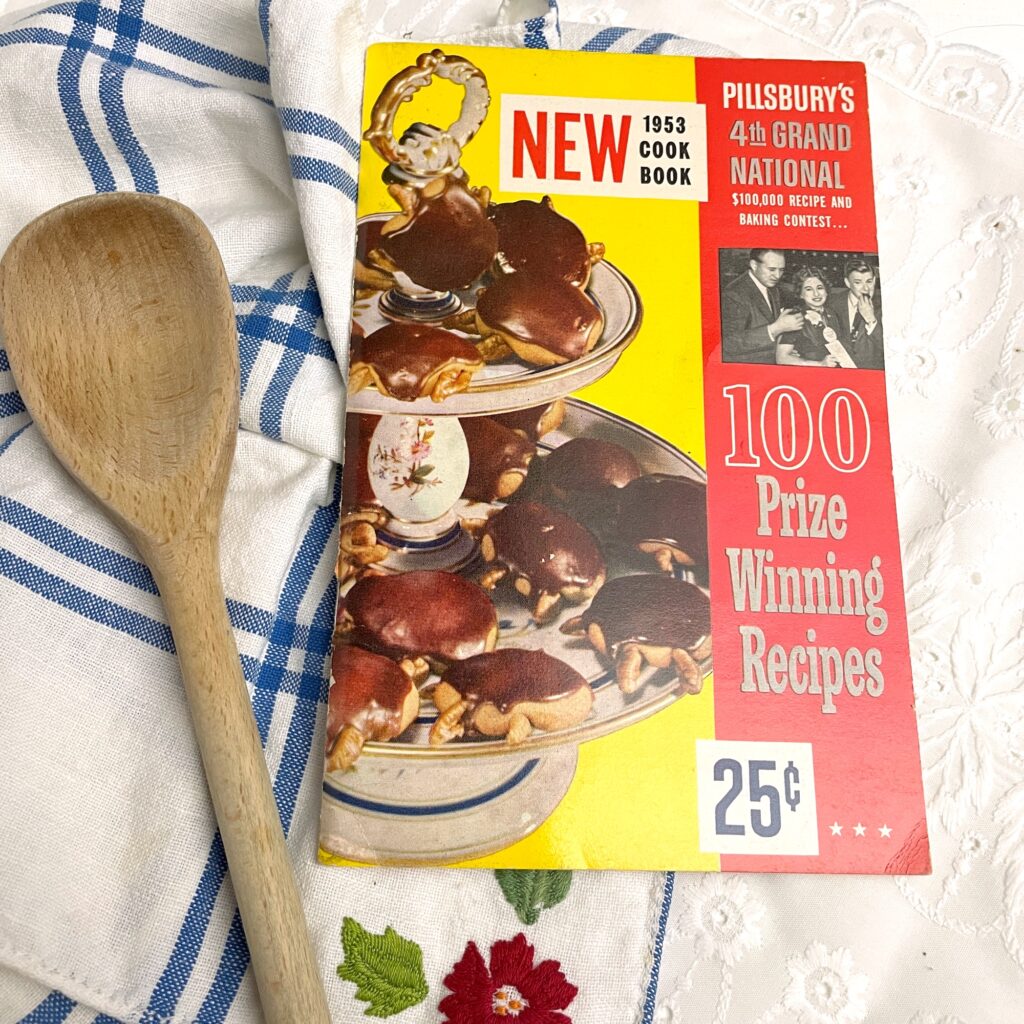
The 100 Prize-Winning Recipes (1953) cookbooklet from Pillsbury’s 4th Grand National $100,000 recipe and baking contest does not disappoint. With recipes “adapted for your use by Ann Pillsbury,” a persona as fictional as Betty Crocker, there are some cookie recipes unlike anything I’ve seen in recent years.
It should be noted that I have not tested these recipes, but I’ve also never been let down by any recipe from a Pillsbury cookbooklet. My philosophy is that, unlike my gramma’s cherry cookie recipe that, if made as written on her recipe card, compares favorably with sweetened sawdust, Pillsbury recipes are tested and specific.
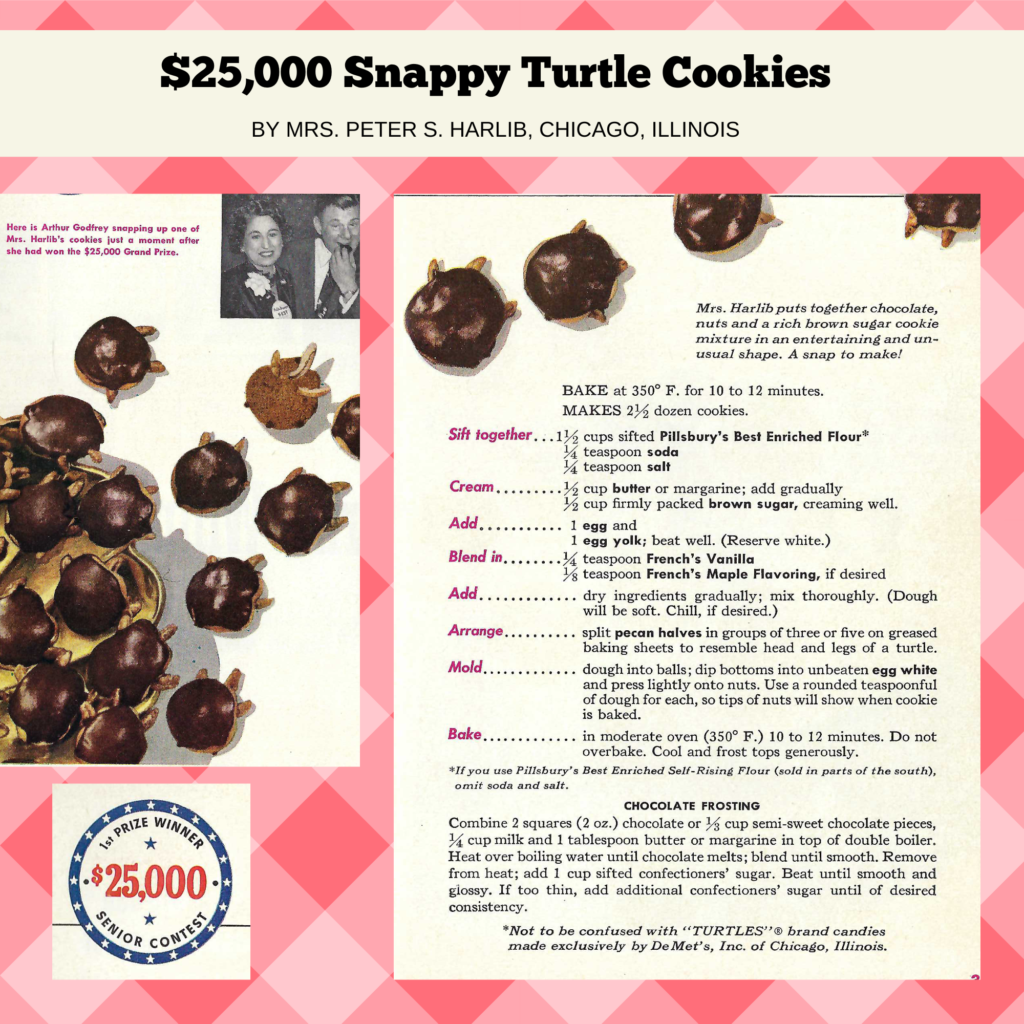
Chocolate turtle candies are delicious. It is not possible to improve upon something made of pecans, caramel and chocolate. Or it is? What about if you add a brown sugar cookie underneath? Mrs. Peter S. Harlib made the bold choice to look perfection in the eye, dial the volume up to 12, and break off the knob. Her boldness earned her $25,000 in 1950s money, which is roughly $325,000 in today’s money.
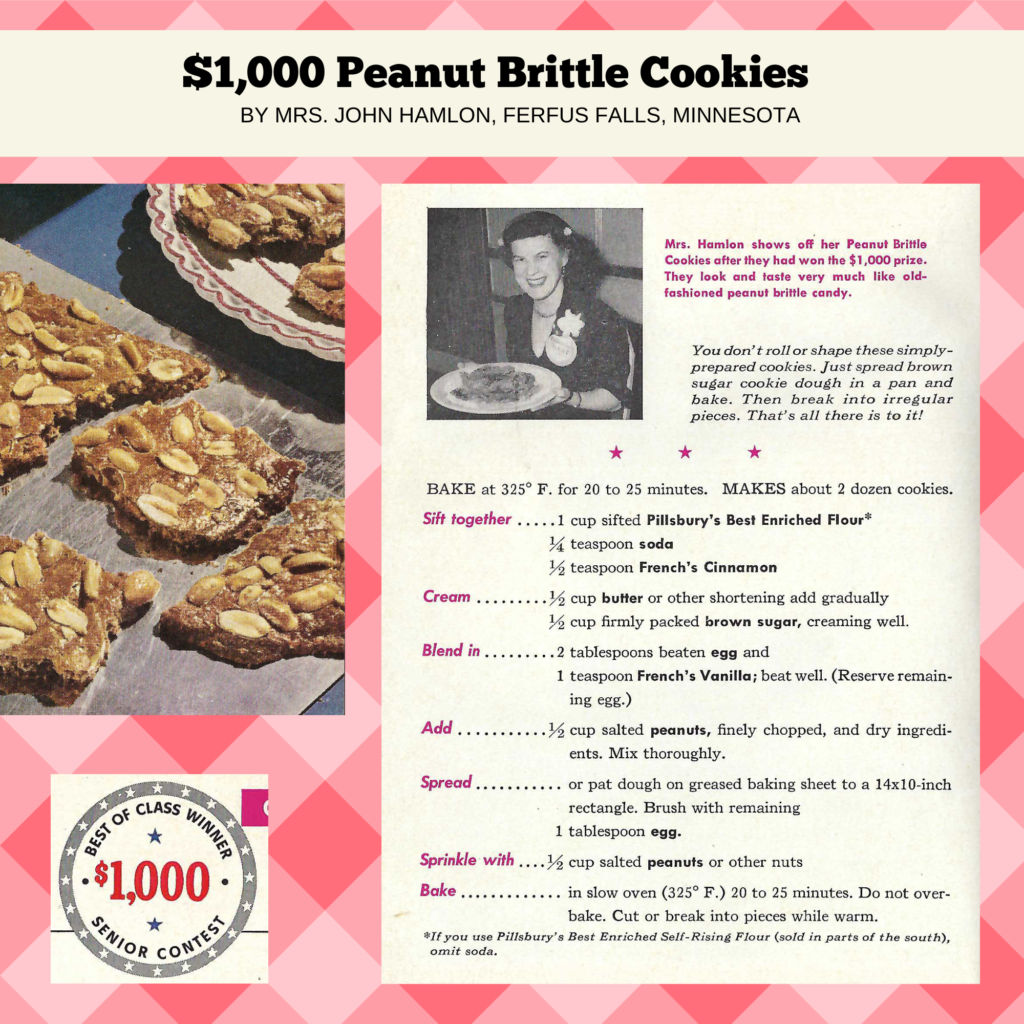
Mrs. John Hamlon took a spin on a classic candy as well with her peanut brittle cookies. These brown sugar cookies topped with peanuts aren’t a bar like brownies, but they are just as easy to bake. Instead of pouring batter into a pan, you spread the dough across a baking sheet. Finishing up by breaking them into pieces instead of cutting neat squares is a nice idea.
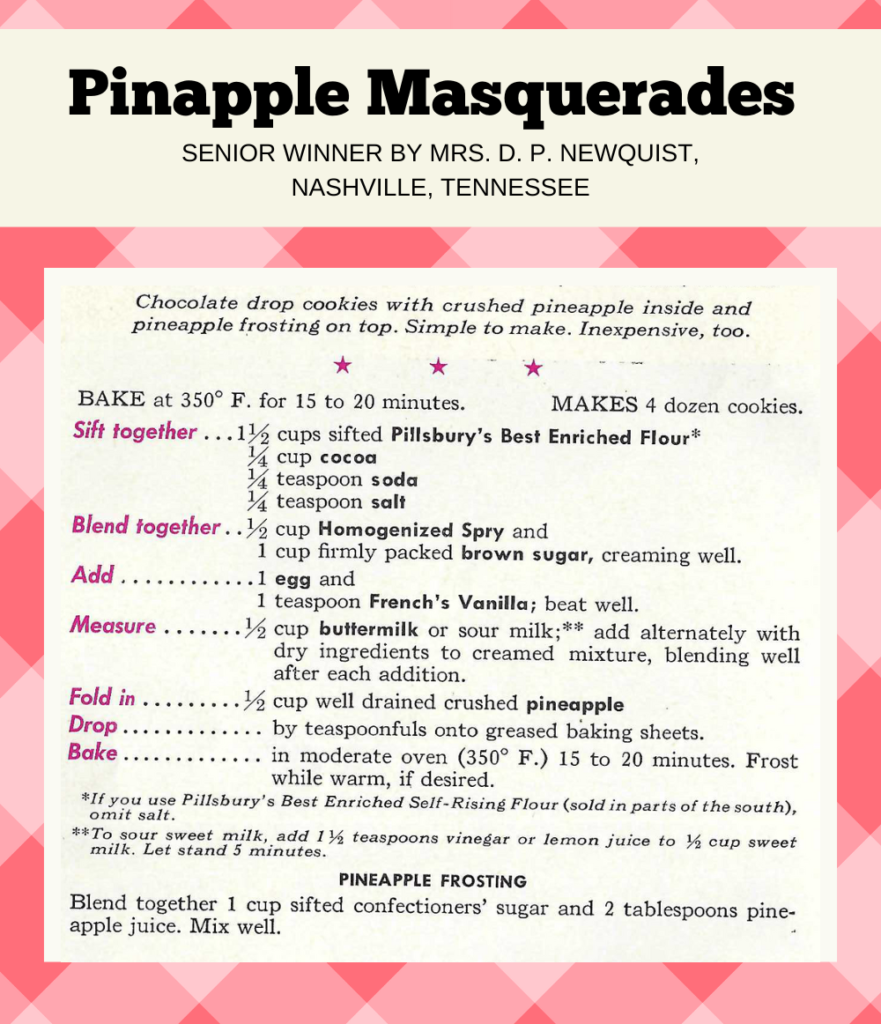
I’ve seen precious few cookie recipes with pineapple. And I can’t remember ever seeing one that was made with crushed pineapple, not candied slices. The idea of introducing crushed pineapple into a chocolate drop cookie, then literally putting the icing on the cake by topping it off with pineapple frosting is absolutely delightful. Well done by you, Mrs. D. P. Newquist.
FYI, the “Homogenized Spry” ingredient is vegetable shortening that was made from 1936 – the 1970s. My favorite fact about Spry is that, in the 1950s, there was a giant illuminated Spry sign in New Jersey, facing Manhattan across the river.
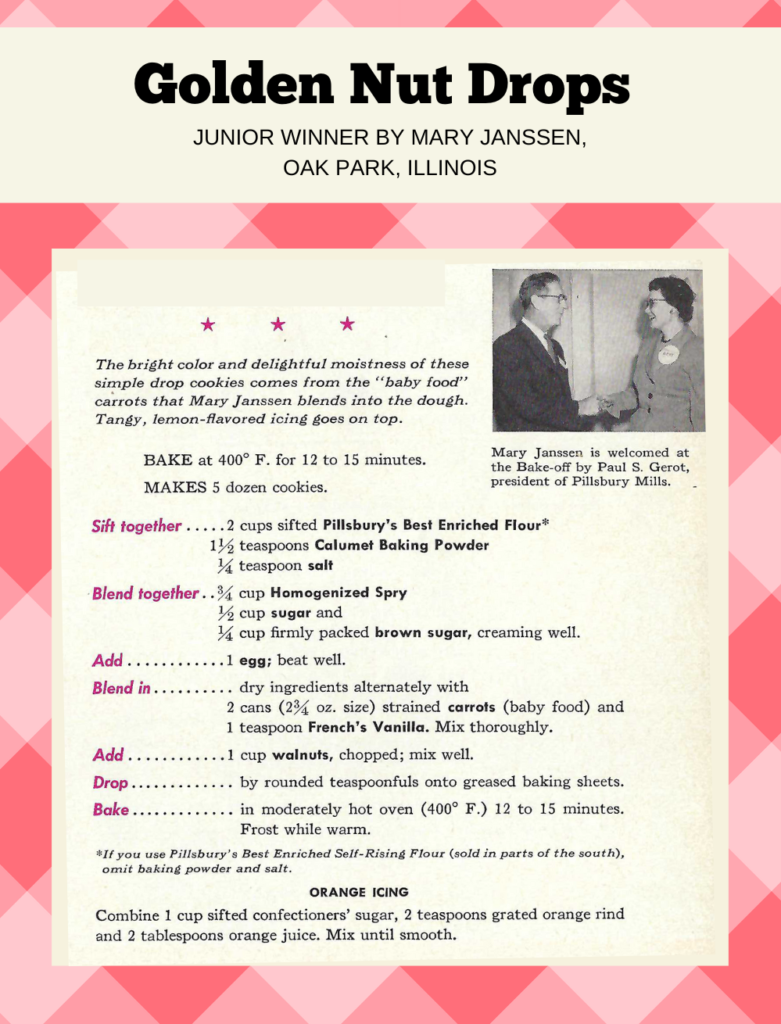
The name of this cookie recipe from junior winner Mary Janssen is vague. Golden Nut Drops could be anything. But adding strained carrots as one of the wet ingredients is an ingenious way to get a golden color and taste. And topping them with an orange icing is unexpected. Today, we would expect a cream cheese icing, à la carrot cake, but not in the 1950s. Although carrot cake has been around since the late 1800s, its peak of popularity with thick, dreamy cream cheese icing was in the 1980s, well after Mary Janssen concocted her golden nuggets.
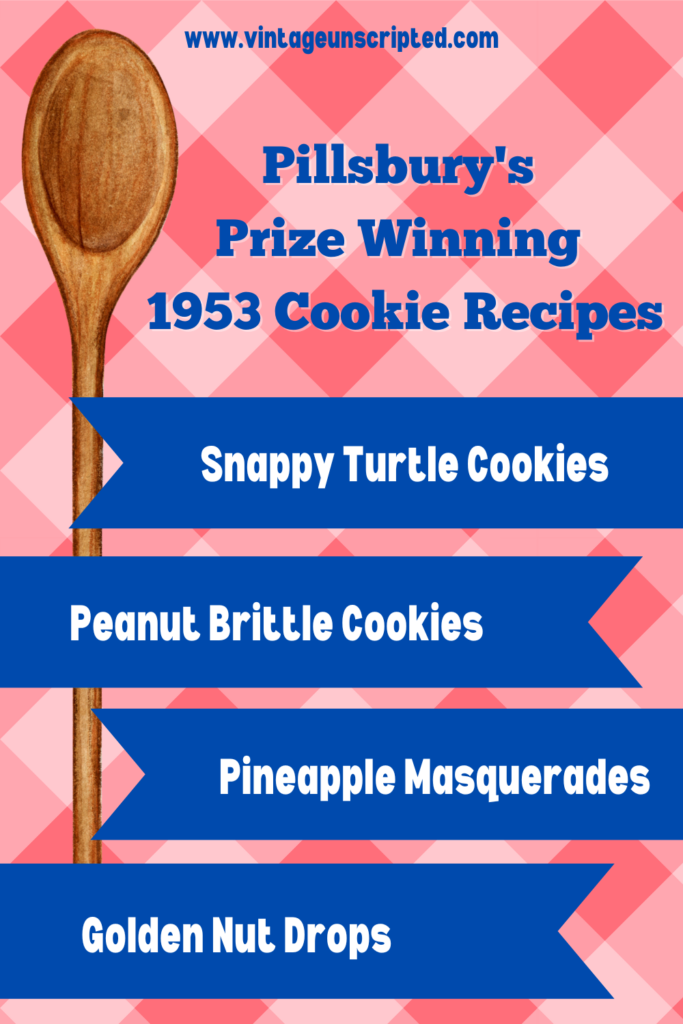

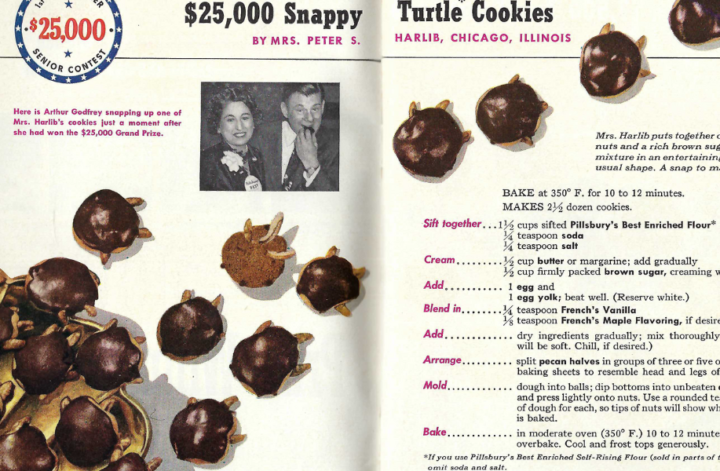


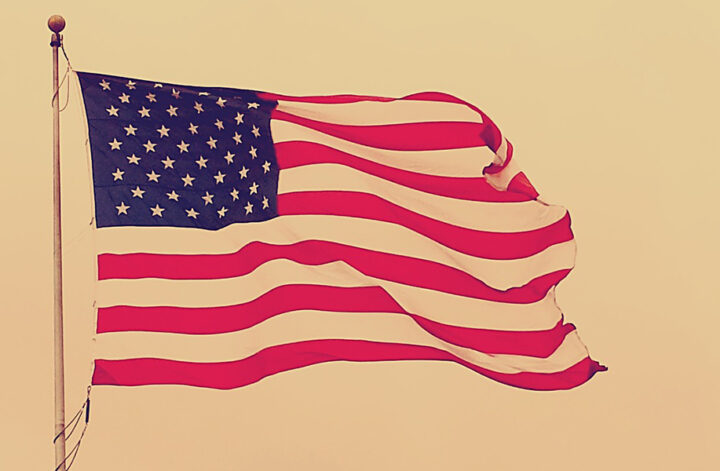

2 comments
Love these recipes! I’m not as excited as you are by mixing pineapple and chocolate, though. You’d think that the one time a woman could use her own first name was when she won a small fortune, but still they are “Mrs Peter” and “Mrs John”.
Yes, that is interesting, isn’t it? I do remember at the time, however, and it may be hard for people to understand now, that was actually a title of respect. And, you’ll probably find this really hilarious, but most women didn’t want their first names listed in the telephone book for privacy reasons.